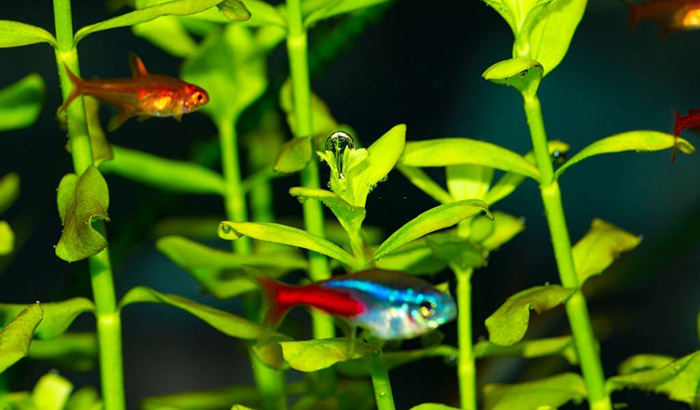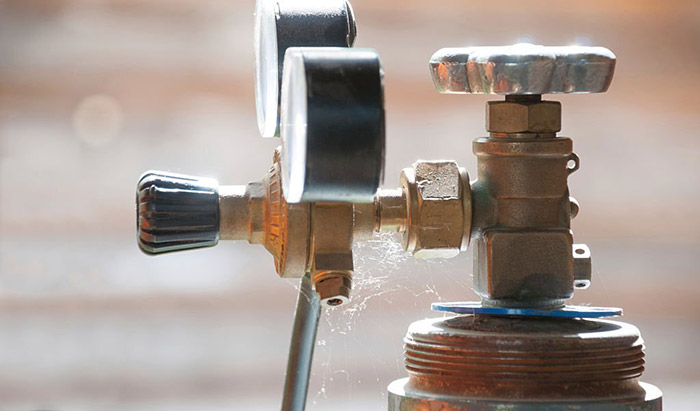Let’s start by clarifying that you only need to add CO2 (Carbon Dioxide) to your aquarium if you have aquatic plants that require more carbon dioxide than your aquatic animals are capable of producing and sustaining constantly.
Now, if you have a heavily planted aquarium then there are various ways to add CO2 to your tank, you can either choose the natural or what they call “low-tech” tanks or by using CO2 injections. Both can be effective depending on the size of your tank, the type of aquatic plants that you have, and the overall aquascaping process that you follow.
Contents
Different ways to add CO2 to the aquarium
The role that CO2 plays in the aquarium ecosystem is important not only for aquatic plants but to the cycle of the environment in general. In the natural habitat, the circulation and supply of carbon dioxide are plenty because they have multiple natural sources unlike in the planted aquarium where there is almost no natural source except the inhabitants.
Some people opted for the low-tech tank process while others chose to use CO2 supplements or CO2 injections, whichever method you decide to apply for your aquarium, just make sure that you keep the CO2 level at a safe level.
Even though it still depends upon the size and volume of your tank, the safest carbon dioxide level is 30ppm per litre, this works for most aquatic life.
How to add CO2 to aquarium naturally
Choose plants purposely – if you intentionally choose the type of aquatic plants that don’t require high carbon dioxide you shouldn’t have to worry about adding more CO2 since the inhabitants are producing the supply of carbon dioxide for the ecosystem.
It is also worth considering adding more fish to your aquarium if you do have enough space, to increase the natural source of carbon dioxide that would circulate in their ecosystem. Here are some plants that don’t need a high amount of carbon dioxide:
- Anubias species
- Water wisteria (Hygrophila difformis)
- Dwarf sagittaria (Sagittaria subulata)
- Vallisneria species
- Ludwigia Repens
- Java moss/fern
- Marsilea species
- Rotala rotundifolia
- Pearl weed ( Hemianthus micranthemoides)
- Sword plants
- Red/green lotuses (Nymphaea Zenkeri)
- Water sprite (Ceratopteris thalictroides)
Go for soil: aquariums that are soil-based substrates have proven to provide better results compared to those aquariums that use sand or gravel substrates, the natural decomposition of soil serves as an additional source of carbon that promotes growth and a long-term supply of nutrients to the aquatic plants.
Using the commercial pellet aqua soil on top of the raw soil helps keep the fine particles under and it is easier to handle and plant in, producing more stable results because of its consistency.
Regular fertilisation: to ensure that your plants and other inhabitants are getting the right amount of nutrients that they need for optimal growth a weekly dose of controlled fertilisation is still recommended.
Be extra careful not to overdo it because too much dose of fertilisation might also be harmful not only to the aquatic plants but also to the aquatic animals in your aquarium.
How to add CO2 to aquariums using supplements and injections
CO2 supplements: these are carbon-based substances that act like a booster that you measure and you pour into your tank. Clearly one of the easiest ways to make sure that your aquarium is getting the carbon dioxide supply for the growth of the aquatic plants.
Here are some of the recommended brands that you could try to work with:
- API CO2 booster
- Fluval Mini Pressurized CO2 Kit
- Seachem Flourish Freshwater Plant Supplement
- Aqueon Leafy Green Liquid CO2
- API Leaf Zone Freshwater Aquarium Plant Fertilizer
CO2 injections: these come in different sizes depending on your aquarium needs, it uses a pressurized vessel to inject CO2 into the tank. You will only need to install CO2 injections if your aquarium is getting a high amount of light, low-light aquariums don’t usually require an extra amount of CO2 because the naturally available level of CO2 is enough to match the light.
Here are some of the top-rated CO2 systems for planted aquariums:
- CO2 Art Pro-Elite Series CO2 Regulator
- CO2 Art Pro-SE CO2 Regulator
- FZone Aquarium CO2 Regulator
- NilocG Aquatics CO2 Regulator
- CO2 Art Diffusor
Why add CO2 to aquariums?
As I’ve mentioned above, you only need to if you have aquatic plants growing in your tank, plants, in general, need water, light and carbon dioxide to produce glucose and oxygen, which they will be using to grow, repair, and continuously survive.
Having enough carbon dioxide will ensure that photosynthesis would be easier for your plants, which will then guarantee that they are producing their food and oxygen which are vital for your aquarium’s overall environment.
Having healthy aquatic plants is also beneficial for all aquatic animals because these plants naturally absorb harmful parameters that may cause harm to the aquarium’s inhabitants.
Conclusion
There are a few things to consider before deciding how to add CO2 to your aquarium, first is the type of plants that you have, do they require more carbon dioxide? The second is the size and volume of your tank, and the third is which method can you maintain and sustain.
By asking these basic questions, you should be able to determine what exactly are your aquarium needs and how to provide it properly by equally considering all inhabitants’ welfare.


